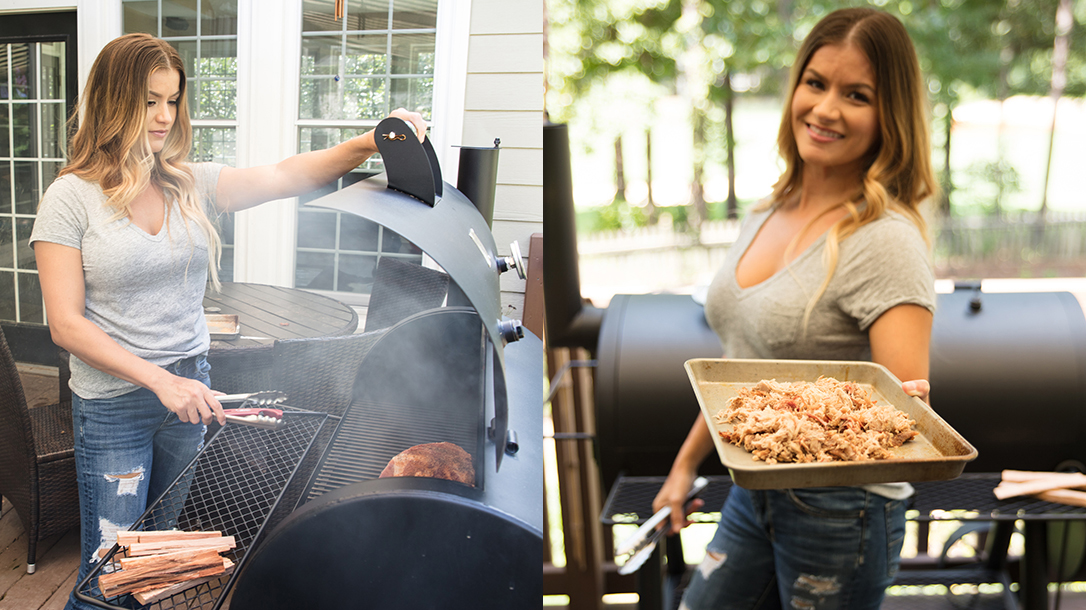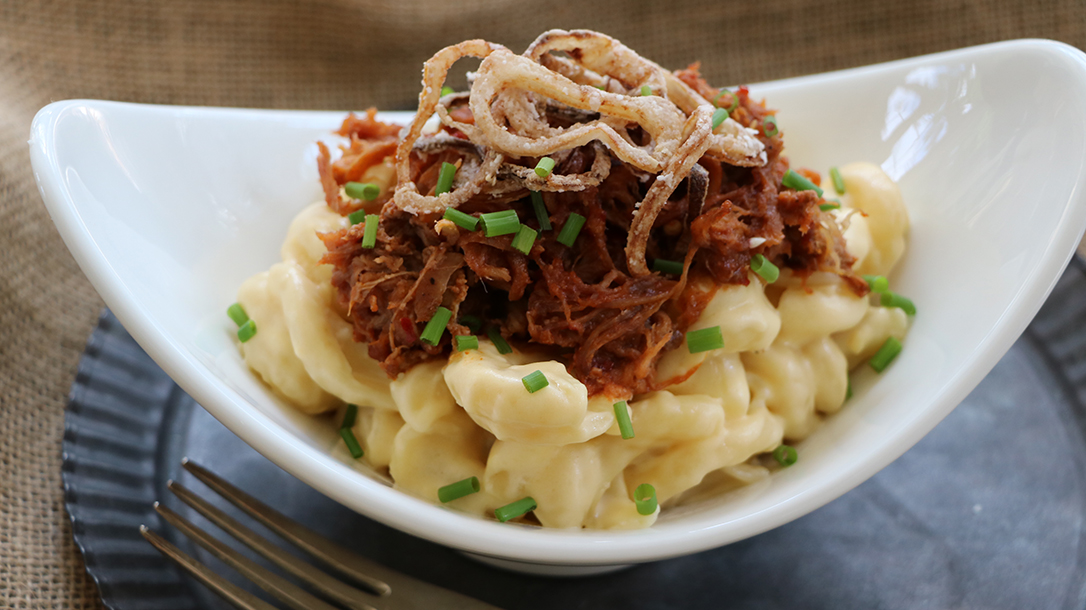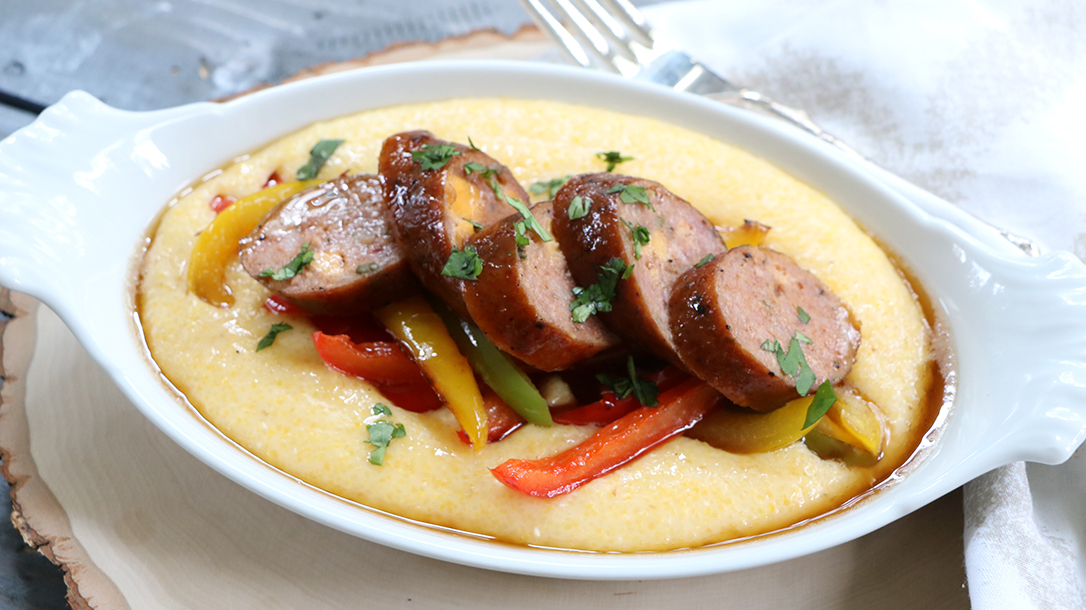Something magical happens when you smoke meats. The process might be long and require lots of love, but then a delicious smell fills your yard, and it brings an amazing meal to share with your friends and family. Of course, some out there might be afraid of smoking wild game — or meats in general — afraid they might get it wrong. But let me tell you, once you master your smoker and the technique, you will keep coming back to this classic style of cooking.
Smoking meats is not just for store-bought proteins, though. Oh no, the earthy flavors that smoking brings pair perfectly with all sorts of wild game. And that’s my specialty.
Advertisement — Continue Reading Below
Getting Started with Smoking Wild Game
The secret to smoking meat is low and slow—low temperature and slow cooking time. Most meats that get smoked are the creature’s working muscles, meaning the shoulders, ribs and legs. These cuts aren’t tender at all, but they benefit greatly from long, slow cooking methods such as smoking or braising.
Before we dive into the basics of smoking, let me begin by saying that I like to start all of my smoked meats off in a brine. This adds moisture to the meat, something that is lost in the act of smoking. Moisture retention is especially important in wild game meats because wild game is much more leaner than farm-raised, store-bought meats. A good way to remember a basic brine is a one-to-one ratio—1 cup of salt to 1 gallon of water—and then add flavorings of your choice. Mix your brine and let it cool in the refrigerator for several hours before adding your protein to it.
Once chilled, add the meat and place it in the refrigerator for at least four hours. (I like to brine some items like shoulders and legs overnight.) When the meat has finished brining, rinse it off in cool, fresh water, pat it dry with a clean towel and then season it.
Advertisement — Continue Reading Below
Wood Selection
Choosing the right wood for your meat is super important because it will impart specific flavors into your food. So you should experiment and figure out what woods you like.
First, make sure you use a hardwood like oak or hickory, for example. They are probably the most popular and readily available of smoking woods. (I like to get mine from smoakfirewood.com.) Fruitwoods, mesquite and maple can add a wonderfully sweet flavor, but have a gentle hand—you definitely don’t want to overdo it with these woods.
Throwing in herbs like rosemary and thyme are great ways to deepen the flavor of your smoked meats. But if you’re going to use them, I suggest using them in the last 20 minutes of your smoking time. And remember to avoid softwoods at all cost. Softwoods contain high levels of resin, which will give your meat a very unpleasant taste. Here are some more notes:
Advertisement — Continue Reading Below
Applewood has a fruity sweet flavor that is great for pairing with fish, pork, poultry and upland game.
Hickory has a strong, distinct flavor that pairs wonderfully with red meats and venison.
Pecan also has a wonderful fruity, slightly sweet flavor to it. It’s great to use for smoking wild boar, fish, upland game and poultry.
Advertisement — Continue Reading Below
Maple has a sweet delicate taste and tends to give your protein a dark coloring with smoking. This wood pairs well with wild boar.
Mesquite is by far the most pungent of the smoking woods. But be careful with mesquite, because if it’s used improperly, it can overpower the flavors of your protein. A good tip is to use mesquite on large pieces of protein.
Cherry pairs well with red meats, venison and pork. You can also add some cherry wood with hickory or oak when smoking.
Advertisement — Continue Reading Below
Put a Ring On It
The smoke ring is the reddish pink coloration just under the surface of that beautiful dark crust. The smoke ring is actually formed by a chemical reaction between the nitrogen dioxide in the smoke and the myoglobin in the meat. When these two chemicals meet, they create nitric acid, which then creates that awesome pink color we all love.
That smoke ring is highly important, especially if you’re into competitive barbecuing, as it indicates that the meat has been successfully cooked at a slow and low temperature. The smoke ring makes its presence slowly but stops once the temperature of the meat reaches approximately 140 degrees Fahrenheit. The thickness of the smoke ring indicates the time it took for the meat to reach that temperature.
Advertisement — Continue Reading Below
To successfully guarantee a good smoke ring, be sure to take your meat from the refrigerator to the cooker. This cooler temperature will give your meat more time to develop its ring. Another good thing to remember is that since the smoke ring develops at 140 degrees, your meat will also stop absorbing the smoke flavor once that point has been reached.
Don’t Get Saucy
Basting is a common technique used in good barbeque. But don’t start basting your meat right away. Good things take time! And like I said, that’s the key here.
Basting is done by periodically coating the meat with a liquid like a sauce, butter or broth to add moisture and flavor to the meat while it cooks. Basting can make a tasty end product, but be sure to use a liquid that is low in sugar. Sugar will burn during that long cooking time, which will create a bitter flavor. Barbeque sauces have lots of sugar in them; therefore, they should only be used towards the last 20 minutes of the cooking process.
Advertisement — Continue Reading Below
Smoking Wild Game Is Worth The Wait
Time and heat are the most important factors to smoking meats. I personally like to keep my smoker in the 200- to 225-degree range. The goal of this smoking game is get the internal temperature of the meat to 180 degrees as slowly as you can.
To reach this goal, you’re looking at cooking times of one and a half hours to two hours per pound of meat. This can vary if the piece is bone-in or bone-out. And again, keep 180 degrees in mind—it’s the magical temperature where collagen breaks down into a liquid gelatin. This is where the magic happens. Collagen is the connective tissue in the muscle fibers of meat. It’s what makes those working cuts tough and very chewy when not properly cooked.
Then, once your protein has reached an internal temperature of 180 degrees, keep it there for at least an hour. This will produce fork-tender meat. Lower cooking temperatures of 180 to 200 degrees do take much longer to cook, but the reward is worth it. Cooking your protein at temperatures above 250 degrees will cook the meat too quickly, which will dry the meat out and won’t give the collagen enough time to fully break down. And no one likes tough, dry meat!
Advertisement — Continue Reading Below
Smoked Pulled Wild Boar on Mac and Cheese
For the brine:
- 1 cup sugar
- 1 cup kosher salt
- 4 lemons cut in quarters
- 1 Tbsp. black peppercorns
- 1 bunch fresh thyme, washed
- Fresh parsley (1 bunch), washed
- 1 garlic head, cut in half
- 1 gallon of water
In a large stockpot, bring the water to a simmer, add the sugar and salt, and then bring the water to a boil. Stir to combine and melt the sugar and salt into the water. Remove from heat, then add the peppercorns, thyme, garlic and parsley. Let the water come to room temperature, then chill it in the refrigerator. Once chilled, the brine is ready to use.
For the spice rub, combine:
- 1 cup smoked paprika
- ¼ cup brown sugar
- ½ cup celery salt
- 3 Tbsp. garlic, granulated
- 1 tsp. cayenne pepper
- 1 tsp. black pepper, ground
- ½ tsp. salt
For the spicy BBQ sauce:
- 1 cup ketchup
- 1 cup apple cider vinegar
- 4 chipotles peppers in adobe sauce
- 3 Tbsp. brown sugar
- ½ tsp. kosher salt
Combine all of the ingredients together in the bowl of a food processor, and process it until it’s smooth. Then simmer the sauce in a saucepan for about 10 minutes on low heat.
For the smoked wild boar shoulder:
- 5 pounds wild boar, brined for at least 7 hours, rinsed and patted dry
- spice rub
- spicy BBQ sauce
Season the pork with the spice rub. Place it on the smoker using pecan wood. Smoke the boar until its internal temperature reaches 180 degrees. Shred the pork by hand, then toss in the BBQ sauce.
For the mac and cheese:
- 8 ounces macaroni noodles
- 3 Tbsp. butter
- ¼ cup all-purpose flour
- ½ tsp. salt
- ¼ tsp. black pepper
- 2½ cups whole milk
- 3 cups cheddar cheese, grated
In a medium saucepan over medium heat, add the butter. When the butter has melted, add the flour, salt and pepper. Whisk the mixture for about two minutes. Continue to whisk and slowly pour the milk in a steady stream. Continue to stir until the sauce thickens, usually for about 10 to 12 minutes.
Boil the pasta until the noodles are al dente. Drain and rinse them with cool water to stop the cooking process. Combine the pasta with the cheese sauce. Top it with the cooked boar, chives and crispy shallots.
Smoked Wild Boar Jalapeño Cheddar Sausage and Grits
For the sausage:
- 2.5 pounds wild boar shoulder, cubed and trimmed of the gristle
- ¾ pounds pork fat, cubed
- ½ pounds cheddar cheese, small cubes
- 5 jalapenos, seeded and chopped
- kosher salt
- black pepper, ground
- medium hog casings, soaked in warm water for at least 30 minutes
- cherry wood for smoking
Using the fine die on your meat grinder, grind the wild boar shoulder and fat into a bowl set over ice water. In the bowl of a stand mixer, add the grinded wild boar, cubed cheese and jalapenos and season with salt and pepper. Mix on medium speed for about two minutes.
Stuff the meat into the hog casing using the sausage attachment on the grinder, creating 6-inch links. Once complete, chill the links in the refrigerator until it’s time to smoke them.
Place the links in a smoker set to 220 degrees Fahrenheit using the cherry wood. Smoke the sausage for about two hours until its internal temperature reaches 155 degrees.
For the grits:
- 4 cups water
- 1 cup grits, regular (not instant)
- 1 cup half and half
- 2 tsp. salt
- 4 Tbsp. butter
- 1½ cups sharp cheddar cheese
Bring the water to a boil in a medium saucepan. Once it’s boiling steadily, whisk in the grits. Reduce the heat to low, cover and let simmer for about seven to eight minutes until the grits are thick and cooked. Take the pan off the heat and add the half and half, butter and cheese to the grits. Stir until the cheese is melted and everything is combined and creamy.
To serve, top the creamy grits with the sliced, sautéed peppers and wild boar jalapeno smoked sausage.
This article is from the winter 2018 issue of Ballistic Magazine. For subscriptions or individual copies, please visit OutdoorGroupStore.com.

























